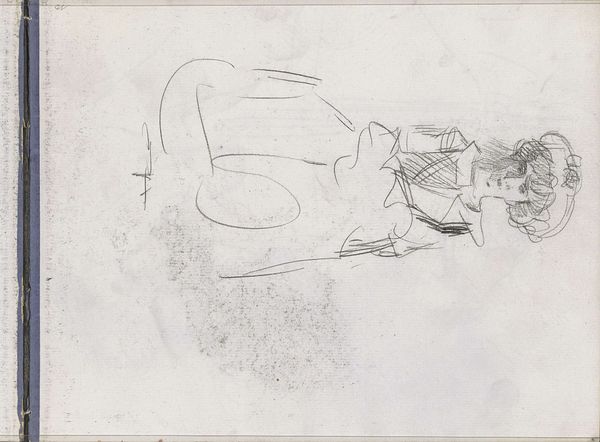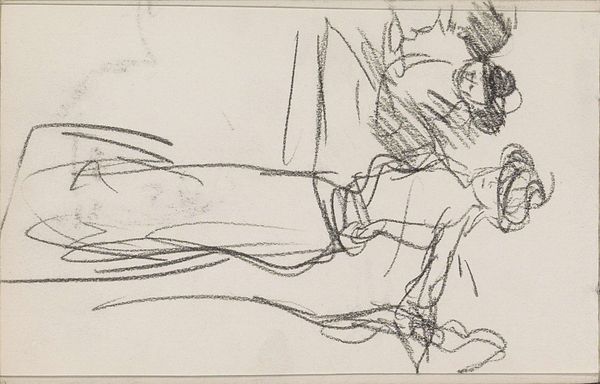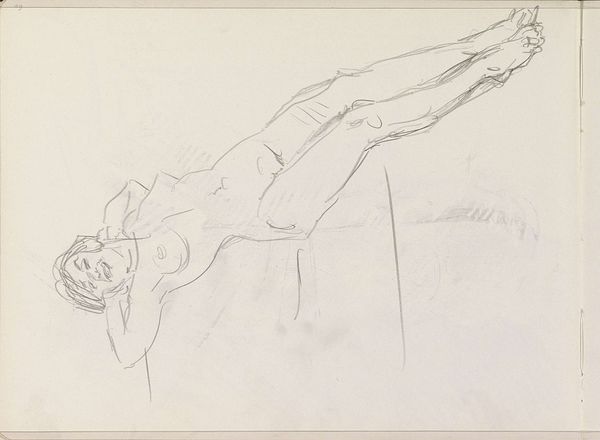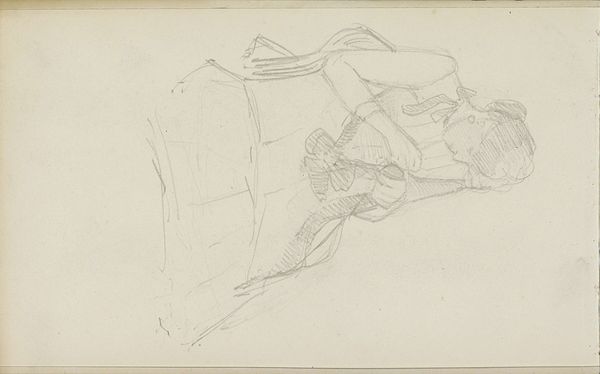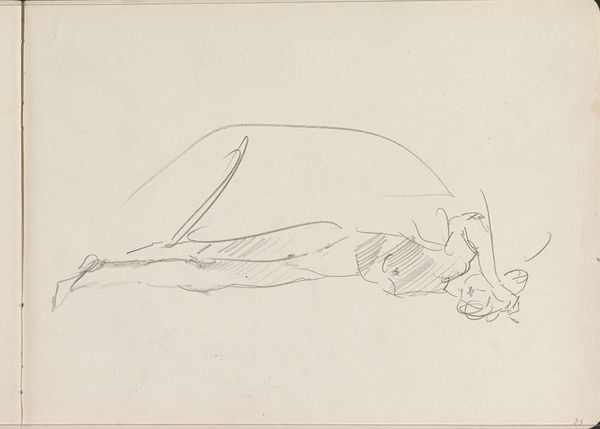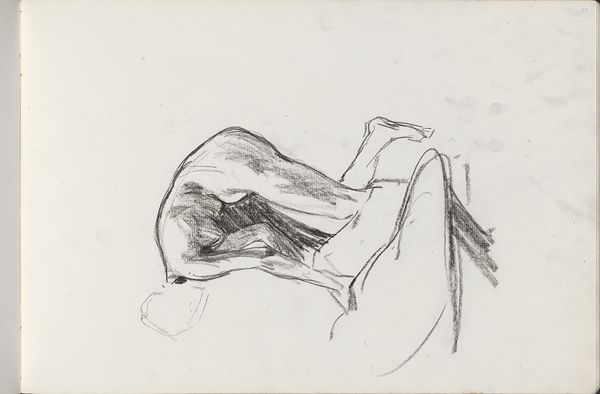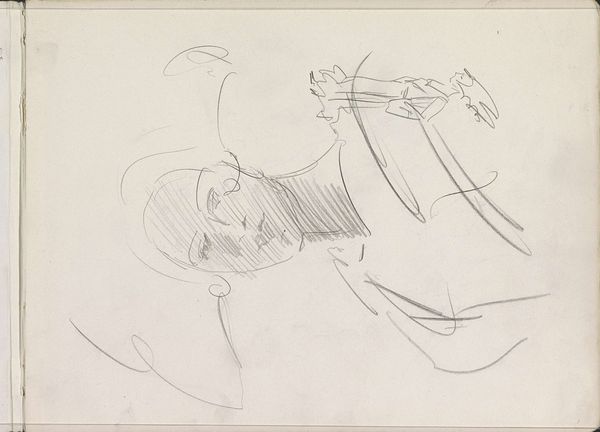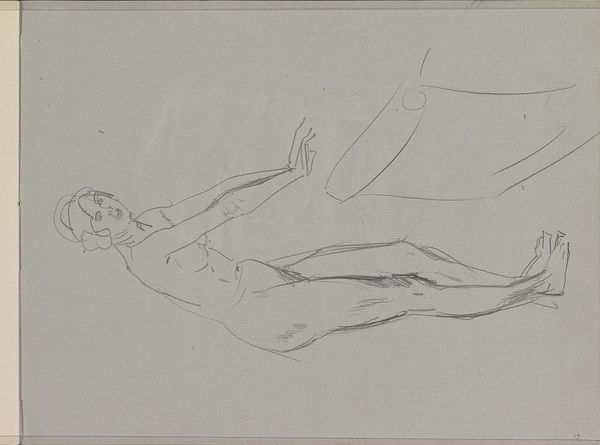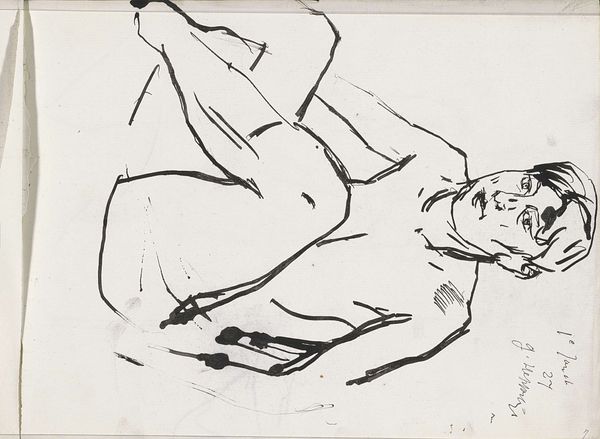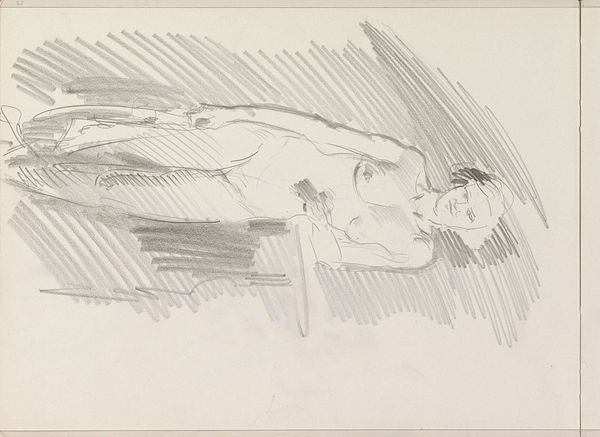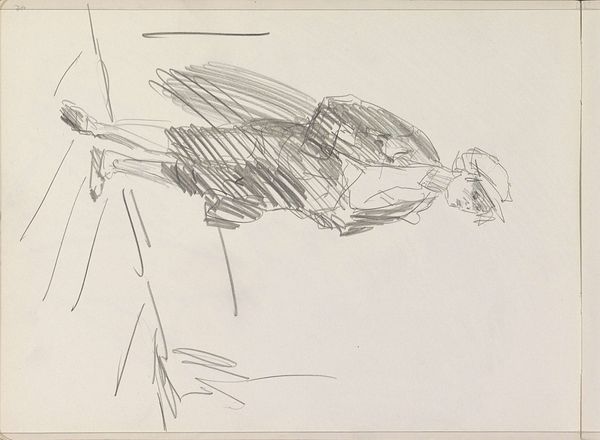
Copyright: Rijks Museum: Open Domain
Curator: I find myself drawn to the vulnerable pose; there's a captivating sense of intimacy in this incomplete form. Editor: Here we have "Liggende vrouw met opgetrokken benen" by Isaac Israels, likely created sometime between 1875 and 1934. It’s currently held at the Rijksmuseum. This study is rendered in pencil on paper. Curator: The use of pencil creates an immediacy. I am interested in the rapid strokes and their direct relationship to the hand that wielded the tool. Editor: Considering the period, it invites a certain discourse around female representation, particularly in relation to the male gaze and evolving social attitudes towards the nude. How does this seemingly unfinished nature further impact the narrative? Curator: It emphasizes the labor and artistic process. The quick strokes signify its creation for exploration. A commodified nude would have highly polished forms. Here we see Israels creating form through material use and through process. Editor: Yes, the roughness also evokes broader considerations concerning women's visibility in that period. Whose gaze is privileged and what statements are being made? This piece almost pushes us to reevaluate how the female body is framed, not just as a symbol of beauty, but also the power structures that dictate representation. Curator: The material simplicity allows us to consider his mark making without getting lost in color. I also want to focus on the hat, whose placement and presence adds so much to this work's cultural meaning. This places this figure as fashionable, urban, part of an aspiring class. Editor: That addition of a modern object, the hat, situates the subject within a specific social context, hinting at class and identity. Her vulnerability takes on new complexity, prompting questions around her status and social mobility, not just form. Curator: Studying this piece has reinforced for me the potency that lies in even a seemingly simple sketch when material and historical details intersect, producing a multitude of possible narratives. Editor: For me, it is a subtle call for contemporary viewers to question historical contexts and reimagine the dialogue between art, gender, and representation.
Comments
No comments
Be the first to comment and join the conversation on the ultimate creative platform.
